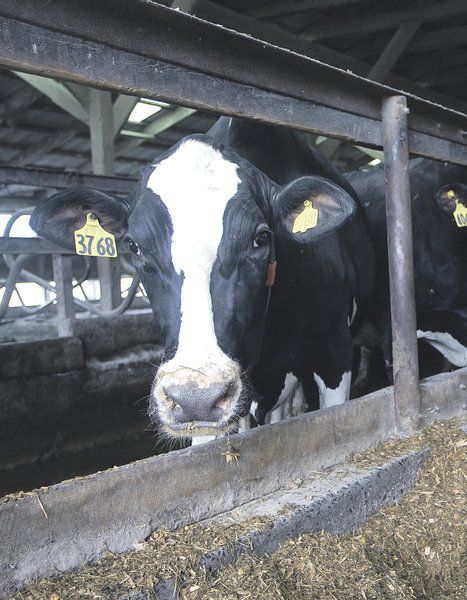By Joe Mahoney CNHI State Reporter

ALBANY — Tim Tucek, a Chenango County dairy farmer, said it was a decision he couldn’t avoid given his limited options — sell the farm or go broke.
Robin Fitch, whose family milks about 170 cows in West Winfield, said she is “99.9 percent” certain that she’ll shut down her operation, too.
Tucek and Fitch are among scores of New York dairy farmers hit hard by a steep, sustained decline in milk prices. The reduction amounts to a cut of about 40 percent of revenues since prices peaked in 2014.
“It’s a sad statement about agriculture in this country when many of the farmers who supply us with our food can financially qualify now for food stamps,” said Dave Rama, a Delaware County cattle dealer.
Cheap milk for consumers comes with a high cost for farmers, said Rama. The effects have spread to small businesses that supply local dairies, as well.
“It’s having a major ripple effect,” he said. “All of a sudden, the vendors have become lenders.”
Dairy farmers have ridden a wave of prices and production, agriculture experts say.
Two years ago, U.S. dairies ramped up production to take advantage of prices rising with international demand, particularly from China.
But exports — to China and Europe — have sharply fallen. The resulting glut and falling prices are bleeding the industry.
“Our farmers are trying to produce as much milk as they can, even though prices are low, to improve their cash flow,” said David Balbian, a dairy specialist with the Cornell Cooperative Extension Service.
“The extra milk is not helping the situation, but individual farmers have to do what’s best for them,” he said.
New York farmers are braced for the situation to worsen, when New York City’s last remaining milk processing plant, Elmhurst Dairy, closes for good this fall. Located in Queens, the 97-year-old plant will lay off 273 workers.
It will also force many upstate farmers to make other arrangements.
Elmhurst is where Tucek sends milk from about 100 cows on his Bainbridge farm. He hopes to sell his cows, he said, before the processor closes.
“Dairy farming is no longer profitable,” said Tucek, 48, who has been milking cows since he was 18. “Prices go up at times, but then they go down for too long.
“We’ve lost 200,000 dairy farms in this country, and no one wants to do anything about it,” he said. “If you can’t eke out a living from it, then you have to do something else.”
A married father of one, Tucek said he does not yet know what he’ll do for work.
Robin Fitch said she agonizes over selling her farm, since her 25-year-old son is committed to making dairy management a career.
Fitch bottle-fed her cows when they were newborn calves. Every one has been given a name, usually inspired by a television character.
Fitch said she keeps tabs on how long she’s had each cow based on the shows that produced their monikers.
“The little milk companies are being pushed out of business,” she said. “The small farms are seen as a thorn in the side of the corporate farms.”
Concerns about the plight of dairy farmers spurred 45 members of Congress to ask the U.S. Department of Agriculture last week for help.
Separately, Sen. Kirsten Gillibrand, D-N.Y., called on Agriculture Secretary Tom Vilsack to reimburse the premiums and fees that farmers paid through a federal insurance program created in 2014.
The department has collected $73 million in premiums but only paid $700,000 to farmers, according to Gillibrand.
Vilsack announced this week that his department will pay out $11.2 million to farmers enrolled in the program, due to the narrowing margin between milk prices and feed costs.
But Tucek said the problem Washington needs to address is a pricing system that causes such wild gyrations in what farmers get for their milk.
With national and international markets out of their control, farmers have limited choices, said Mariane Kiraly, an educator for Cornell Cooperative Extension.
Selling cows may not be the best option, she said, because the low price of milk has decreased the demand — and prices — for cattle, too.
Some farmers resort to selling timber and stone to stay ahead of their bills, said Kiraly, who helps farm families with financial planning.
Fitch said she doesn’t see the plight of farmers improving unless the federal government finds a “balance” to keep dairy producers from losing money by milking cows.
“Right now there is no light at the end of the tunnel,” she said. “The government encourages young people to get into farming. But what they are doing is setting them up for a disaster.”
Joe Mahoney covers the New York Statehouse for CNHI’s newspapers and websites. Reach him at jmahoney@cnhi.com












